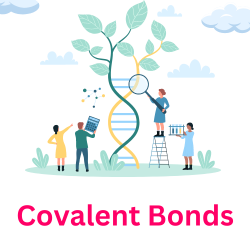| sp3 | sp2 | sp |
|---|---|---|---|
Orbitals involved | One s and three p-orbitals of the central atom that are close in energy mix to form four sp3 hybrid orbitals for covalent bond formation. | When the central atoms’ one s and two p-orbitals mix, it forms three sp2 hybrid orbitals. | Mixing of one s and one p-orbital form two sp hybrid orbitals. |
Images |  |  |  |
Shape & Bond Angle | The hybrid orbitals spread to minimize interelectronic repulsions so that the angle between the orbitals is 109.5o. The shape is tetrahedral. | The hybrid orbitals spread at a bond angle of 1200 to minimize repulsions and have a trigonal planar shape. | The two-hybrid orbitals are at an angle of 180ofrom each other and the shape is linear. |
Impact of the lone pair | If one of the hybrid orbitals is occupied by a lone pair, the bond angle decreases (< 109o), and the shape changes to a trigonal pyramid or bent. | If the lone pair occupies one of the hybrid orbitals, the shape changes to bent. In that case, the bond angle is also less than 120o. | Since the substituents are at a maximum distance from each other, the presence of a lone pair on any substituent has no impact on the bond angle and shape of the molecule. |
Number of bonds | A sp3 hybrid orbital with no lone pair forms four bonds. If one of the substituent positions is replaced with one lone pair, then the central atom forms three bonds. If there are two lone pairs, then the central atom forms two bonds. | A sp2 hybrid orbital with no lone pair forms three bonds. If one of the substituents is a lone pair, the central atom forms two bonds. | A hybrid orbital of the central atom forms two bonds using its two sp hybrid orbitals. |
Image |  |  |  |
s-character | Since the involvement of the s-orbital (the orbital closest to the nucleus) is only 1/4th, the s-character is also 25%. | In sp2 hybridization, maximum involvement is of p-orbitals at 67% and only 33% (or 1/3rd) for the s-orbitals. | Here, the involvement of both s and p-orbitals is 50%. The s-character is, therefore, 50%.
|
Electronegativity | Higher s-character means more hybrid orbitals are influenced by nuclear pull, affecting electronegativity. However, due to low s-character, the electronegativity of sp3 hybrid orbitals is lower than sp2 and sp.
sp3 < sp2 < sp | The electronegativity of the central atom is between sp3 and sp orbitals.
sp2 > sp3 sp2 <sp | At 50% s-character, the electronegativity of the central atom is the highest.
sp > sp2 > sp3 |
Examples | CH4, CH3-OH, CH3-NH2, CH3-Cl, etc. | AlH3, HCOH, (CH3)3C+ | H-C≡N, HC≡CH |
Related Reading- Central atom, Hybridization from Chapter Covalent Bond, Course - Introductory Organic Chemistry.
